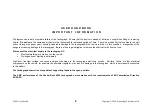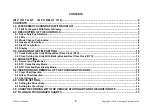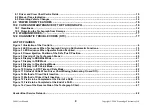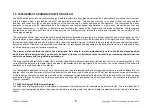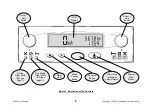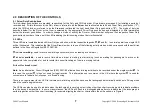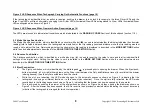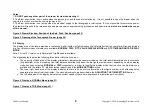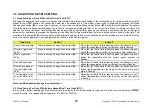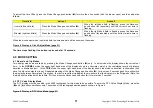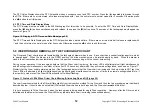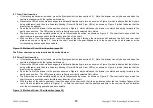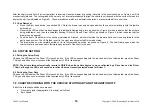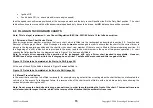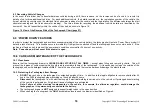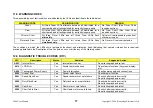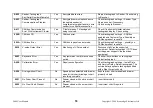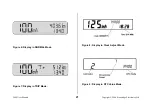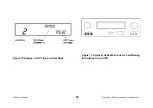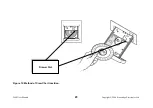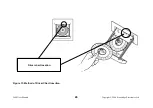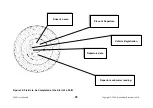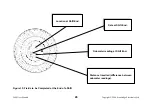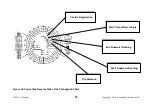
2400 User Manual
Copyright © 2004 Stoneridge Electronics Ltd
16
8.3 Recording Vehicle Changes
In the event that a driver has to transfer between vehicles during a shift, there is space, on the reverse centre of a chart, to record trip
details of up to three additional vehicles. For each additional vehicle, the details required are: the registration number of the vehicle, the
time at which duty commences, the start and finish odometer readings for the vehicle and the trip distance (the difference between the start
odometer reading and the finish odometer reading). The three areas for recording the additional vehicle details are identified by the
numbers 2, 3 and 4 respectively within the centre of the chart, as shown in Figure 16.
Figure 16 View of the Reverse Side of the Tachograph Chart (page 27)
9.0 ‘POWER DOWN’ FEATURES
In order to protect the tachograph and avoid unnecessary draining of the vehicle battery, the tachograph will enter a ‘Power Down’ mode if it
detects a lack of activity. This condition occurs immediately if the ignition is switched off and the tachograph does not contain a chart. If the
ignition is off and a chart is present the ‘power down’ condition occurs after 24 hours of non-activity.
Note: Power-down will not occur if the drawer is open.
10.0 CARE AND MAINTENANCE OF THE TACHOGRAPH
10.1 Cleanliness
Ensure that the tachograph drawer is
CLOSED AND LATCHED AT ALL TIMES
– except when fitting and removing charts. This will
prevent the ingress of contaminants which could lead to premature failure of the tachograph. If it is necessary to clean the outside of the
tachograph use a mild detergent solution
ONLY
. Avoid the use of solvents that could permanently damage the plastic fascia.
10.2 Protecting the Tachograph from Damage
•
DO NOT
leave charts in the tachograph for extended periods of time. In addition to the legal obligation to remove charts after 24
hours, the 2400 tachograph stops recording on the chart after 24 hours.
•
Disconnect
the tachograph from its electrical supply if electrical welding is carried out on the vehicle or if prolonged boost starting
of the vehicle is anticipated or if high-level transient voltages are anticipated.
Note: Failure of other electrical components on the vehicle, for example the alternator regulator, could damage the
tachograph, as it is permanently connected to the battery.
•
The tachograph drawer is
NOT
designed to support weight when in the open position.
•
When opening the Tachograph, the
ONLY
acceptable place to push the drawer is identified on Figure 4.

